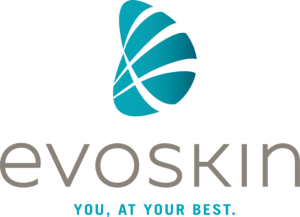Safe and effective treatments reduce the appearance of scars and improve skin texture.

Safe and effective treatments reduce the appearance of scars and improve skin texture.
Scars are formed as a result of the body’s natural response to skin damage. The appearance and type of scar that develops depend on various factors, including the cause of the skin injury, the depth and type of wound, genetic predisposition, local infection or inflammation, and other variables.
At Evoskin, we offer several advanced laser treatments for scar reduction, including SLP Nd:YAG, Q-switch, CPL, and Erbium Fractional. These minimally invasive procedures have a short recovery time and can be used individually or in combination for maximum results.
Post-inflammatory hyperpigmentation can be effectively treated with less aggressive lasers such as CPL or Mandelic acid-based peel.
To reduce the appearance of stretch marks, the best approach is a combination of scar reduction and regenerative therapy that promotes the growth of new collagen, elastin, and hyaluronic acid-rich connective tissue. The fractional Erbium laser safely and effectively ablates the surface layer of skin while stimulating the formation of new skin cells, collagen, and elastin tissue.
Scars are formed as a result of the body’s natural response to skin damage. The appearance and type of scar that develops depend on various factors, including the cause of the skin injury, the depth and type of wound, genetic predisposition, local infection or inflammation, and other variables.
At Evoskin, we offer several advanced laser treatments for scar reduction, including SLP Nd:YAG, Q-switch, CPL, and Erbium Fractional. These minimally invasive procedures have a short recovery time and can be used individually or in combination for maximum results.
Post-inflammatory hyperpigmentation can be effectively treated with less aggressive lasers such as CPL or Mandelic acid-based peel.
To reduce the appearance of stretch marks, the best approach is a combination of scar reduction and regenerative therapy that promotes the growth of new collagen, elastin, and hyaluronic acid-rich connective tissue. The fractional Erbium laser safely and effectively ablates the surface layer of skin while stimulating the formation of new skin cells, collagen, and elastin tissue.

Get in touch with the Evoskin team today to learn more about our products, treatments, and services.
Phone: +1.802.EVOSKIN (+1.802.386.7546)
Email: info@evoskin.com


This website uses cookies so that we can provide you with the best user experience possible. Cookie information is stored in your browser and performs functions such as recognising you when you return to our website and helping our team to understand which sections of the website you find most interesting and useful.
Strictly necessary cookies should always be turned on in order to save your preferences for cookie settings.
Se disabiliti questo cookie, non saremo in grado di salvare le tue preferenze. Ciò significa che ogni volta che visiti questo sito web dovrai abilitare o disabilitare nuovamente i cookie.
This Web site uses Google Analytics to collect anonymous information such as the number of visitors to the site and the most popular pages.
Keeping this cookie enabled helps us improve our Web site.
Attiva i cookie strettamente necessari così da poter salvare le tue preferenze!
More information on our Cookie Policy